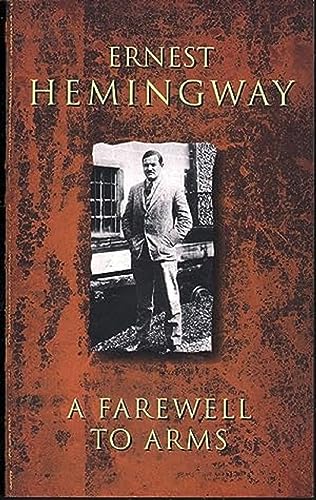
A Farewell to Arms tells the story of an American ambulance driver stationed on the Italian front during World War I. During his service, he meets and falls in love with a British nurse. Their romance becomes a rare source of comfort in a world consumed by violence. The novel is set against the backdrop of the German offensive at Caporetto. Hemingway paints a bleak picture of the war—soldiers trudging through relentless rain, weary and broken by the horrors they face. As the front collapses, the characters are forced to confront hard choices. The tension between duty and survival runs deep, revealing the moral complexity of war. The love story at the center of the novel offers moments of hope, but even that is fragile. War touches everything, and no one remains untouched by its reach. Drawing from his own experiences in World War I, Hemingway crafts a narrative that feels both authentic and deeply personal. His style is famously spare—each sentence stripped down to its emotional core. This simplicity gives the novel its quiet power. Hemingway once said he rewrote the ending thirty-nine times. He was searching for the precise words to match the weight of the story. The result is a haunting and enduring novel. A Farewell to Arms remains one of literature’s most powerful portraits of love and loss in a time of war.
Author

Terse literary style of Ernest Miller Hemingway, an American writer, ambulance driver of World War I, journalist, and expatriate in Paris during the 1920s, marks short stories and novels, such as The Sun Also Rises (1926) and The Old Man and the Sea (1952), which concern courageous, lonely characters, and he won the Nobel Prize of 1954 for literature. Economical and understated style of Hemingway strongly influenced 20th-century fiction, whereas his life of adventure and his public image influenced later generations. Hemingway produced most of his work between the mid-1920s and the mid-1950s. He published seven novels, six short story collections and two nonfiction works. Survivors published posthumously three novels, four collections of short stories, and three nonfiction works. People consider many of these classics. After high school, Hemingway reported for a few months for the Kansas City Star before leaving for the Italian front to enlist. In 1918, someone seriously wounded him, who returned home. His wartime experiences formed the basis for his novel A Farewell to Arms . In 1922, he married Hadley Richardson, the first of his four wives. The couple moved, and he worked as a foreign correspondent and fell under the influence of the modernist writers and artists of the expatriate community of the "lost generation" of 1920s. After his divorce of 1927 from Hadley Richardson, Hemingway married Pauline Pfeiffer. At the Spanish civil war, he acted as a journalist; afterward, they divorced, and he wrote For Whom the Bell Tolls . Hemingway maintained permanent residences in Key West, Florida, and Cuba during the 1930s and 1940s. Martha Gellhorn served as third wife of Hemingway in 1940. When he met Mary Welsh in London during World War II, they separated; he presently witnessed at the Normandy landings and liberation of Paris. Shortly after 1952, Hemingway went on safari to Africa, where two plane crashes almost killed him and left him in pain and ill health for much of the rest of his life. Nevertheless, in 1959, he moved from Cuba to Ketchum, Idaho, where he committed suicide in the summer of 1961.